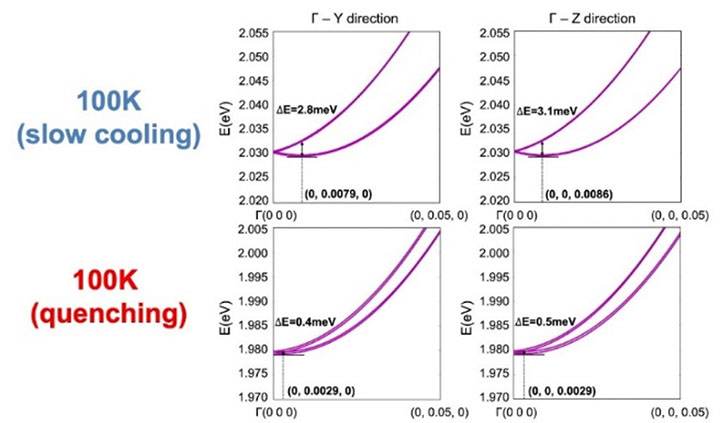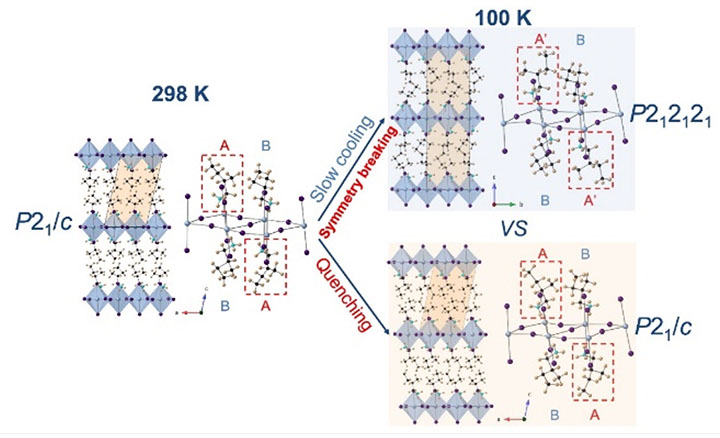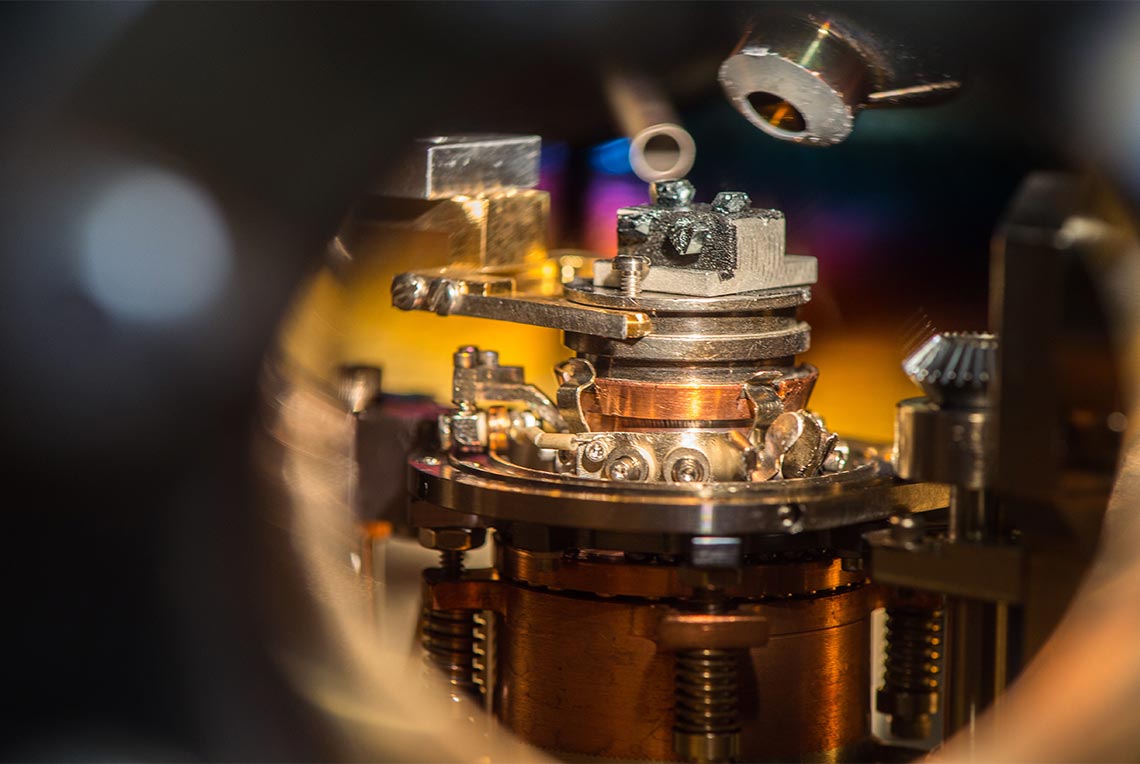Kinetically Controlled Structural Transitions in Layered Halide-Based Perovskites: An Approach to Modulate Spin Splitting
Aug. 24, 2022
Ultrafast ("flash") differential scanning calorimetry shows a relaxation time that is on the minute timescale at the transition temperature (enabling kinetic control). This work shows the potential for developing kinetically controlled structural transitions as an approach to switch and control the properties that are distortion/symmetry-related (e.g., spin splitting) in future hybrid organic-inorganic perovskite systems.
Scientific Achievement
We demonstrate a kinetically controlled structural transition that enables accessing two distinct states with different degrees of structural distortions and symmetry breaking and resultant spin splitting at the same temperature.
Significance and Impact
This work opens a new pathway to use kinetically controlled structural transition and thermal cycling for switching and controlling the physical phenomena that rely on structural distortions and symmetry.
Research Details
- Investigated the crystal structures for a new chiral 2D perovskite (S-2-MeBA)2PbI4 at 298 kelvin (K) (room-temperature) and 100 K under different cooling rates
- Demonstrated that the cooling rate dictates the occurrence of structural transition (top panel)—i.e., slowing cooling induces the transition, accompanied by chirality transfer and symmetry breaking within the perovskite layer, while rapid quenching inhibits the transition and locks in the metastable room-temperature phase
- Indicated a minute-scale structural relaxation time for ultrafast ("flash") differential scanning calorimetry at the transition temperature, allowing for the structural control
- Discovered density-functional theory points to significant spin splitting in the 100 K slow cooling phase, in contrast to the reduced spin splitting in the 100 K quenched phase (bottom panel).
Related People
All principal investigators listed in the publication.
Volker Blum
Duke University
David Mitzi
Duke University











